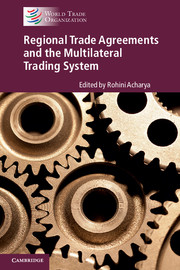Book contents
- Regional Trade Agreements and the Multilateral Trading System
- Regional Trade Agreements and the Multilateral Trading System
- Copyright page
- Contents
- Figures
- Tables
- Annex tables
- Notes on contributors
- Foreword by Roberto Azevêdo
- Acknowledgements
- Abbreviations and acronyms
- Disclaimer
- Introduction Regional trade agreements: recent developments
- Part One Trade in goods and services
- Part Two Other provisions
- Index
- References
Part One - Trade in goods and services
Published online by Cambridge University Press: 24 September 2016
- Regional Trade Agreements and the Multilateral Trading System
- Regional Trade Agreements and the Multilateral Trading System
- Copyright page
- Contents
- Figures
- Tables
- Annex tables
- Notes on contributors
- Foreword by Roberto Azevêdo
- Acknowledgements
- Abbreviations and acronyms
- Disclaimer
- Introduction Regional trade agreements: recent developments
- Part One Trade in goods and services
- Part Two Other provisions
- Index
- References
Summary

- Type
- Chapter
- Information
- Publisher: Cambridge University PressPrint publication year: 2016



